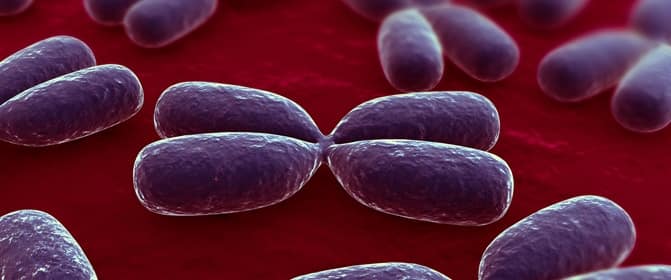The blueprint of our body
Every human being consists of several trillions of small cells that, when put together, form the tissue of our body. Every single cell contains a cell nucleus, which in turn contains about 30,000 different genes that control the most diverse properties and mechanisms of our body.
For example, there are genes that determine the color of our eyes; genes that control what height we reach; genes responsible for digesting certain foods; and genes responsible for the function of nerve cells in our brain. All genes together thus form the blueprint of our very individual body.
Unfortunately, our genes are not flawless and each of us carries certain genetic defects or gene variations that we have either inherited from our parents or that have formed by chance and now negatively affect our health. These gene variations occur very frequently and are usually just simple letter changes in the genetic code. The different variations weaken our immune system, increase our risk of heart attack or give us bad eyesight. Of course, each of us carries different variations, which means that some people have a higher risk of heart attack and others cannot tolerate lactose, for example. Diseases that are clustered in certain families are a good example of how an individual’s risk of disease can vary from family to family and from person to person.

A chromosome contains DNA on which the genes are encoded
Increased risk of disease due to genetic defects
Genetic defects can affect our health, but in many cases they do not represent absolute facts of getting a disease, only an increased risk of disease. Whether the disease breaks out depends on external influences such as the environment and lifestyle. For example, if a person cannot tolerate lactose due to a genetic defect, that person is perfectly healthy as long as they do not drink milk. Complaints only arise when certain environmental influences occur – in this case lactose intake via food.
It is the same with other diseases. For example, if an iron uptake regulation gene is defective, this increases the risk of iron storage disease and a precautionary lifestyle is needed to prevent the disease and perhaps prevent it altogether.
Genetic testing for preventive health care
Now, with the latest technology, it is possible to have certain genes tested for defects associated with disease. The results of the analysis can then be used to put together a preventive program that will significantly reduce your personal risk of disease and help you stay healthy.
A healthy lifestyle is, of course, generally to be strived for, because it can neutralize many genetic predispositions even without information about personal risks. However, this will give you additional information about what you should pay special attention to based on your genetic profile, as well as preventive measures that do not fall under the general guidelines of healthy living.


